Silent and immovable, the King of the Roads sits at the crest of a treeless hill. Below rise the sounds of motorsport’s most dangerous discipline: shrieks of engines, static-laced loudspeaker broadcasts, hum of thousands of spectators. A patina of grey and green has covered Joey Dunlop and his Honda RC51 motorcycle, except for one spot – the throttle, rubbed to bronze by visitors hoping to carry home some of the racer’s magic.
Though the King has become legend, he was once an ordinary man. William Joseph Dunlop was born near Ballymoney, Northern Ireland, in February of 1952. His cottage home was typical of rural Ulster – no running water, rudimentary electrical system rigged up by the father. Dunlop Sr. was a mechanic, and there were eventually six in the family to feed. Every summer, wee Joey was out picking potatoes in the fields with his friends from school.
Motorcycle road racing boasts a hundred-year history in Northern Ireland, dating to immediately after 1920’s Government of Ireland Act split the island north and south. The old days had a piratical spirit, Nortons and Imperial-JAPs dicing it up on roads that weren’t officially closed. To ensure the sport’s continuation, owners quickly became organised, and the first official Ulster Grand Prix was held in October of 1922.
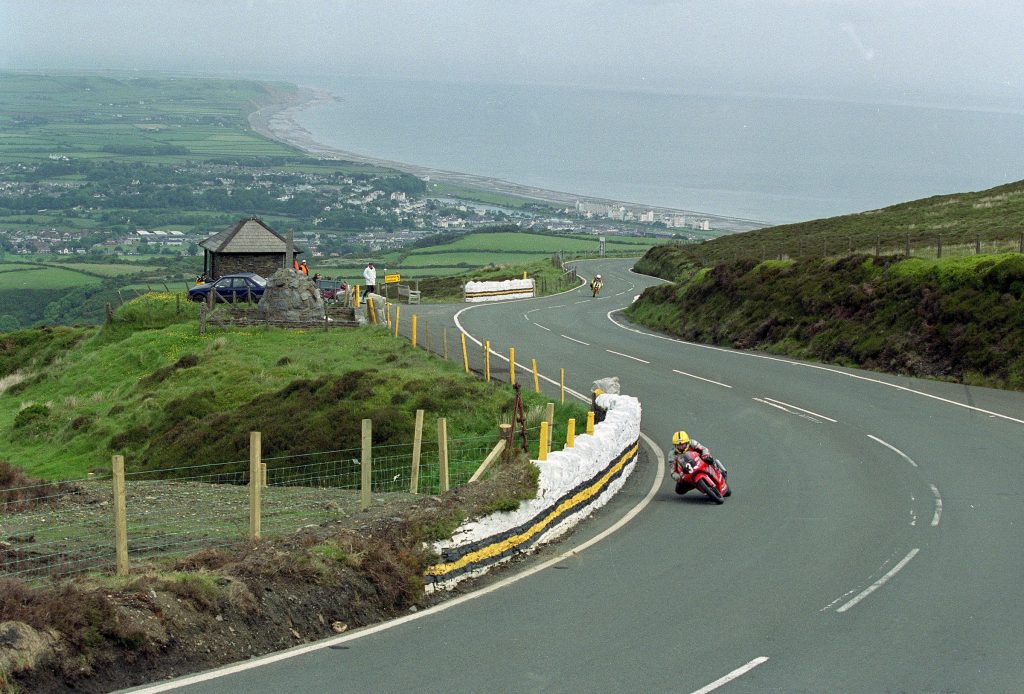
Dunlop was introduced to motorcycle racing at age fifteen. His friend, Mervyn Robinson – whom everyone called Robo – had begun racing in 1968. Robinson was a skilled mechanic, expert at cobbling bikes into roadworthy machines with parts scrounged on a thin budget. Joey started racing the following year on a Triumph Cub. Since they didn’t have enough parts to keep both motorcycles competition-ready, the pair occasionally swapped parts between bikes.
In 1971, local racer Ray McCullough rode a two-stroke 500cc Yamaha prepared by the mechanical engineering department at Queen’s University Belfast to victory at the Ulster Grand Prix. As a hometown lad who beat several world champions, McCullough became a hero to many, and any race he entered had a cheering section. But some noted that a short, perpetually greasy young fellow was often keeping up on a bike that looked barely held together.
By 1975, Joey Dunlop had a proper sponsor – John Rea of Rea Haulage – and he won his first race in the 500cc class at North Ireland’s Temple 100. The Rea and Dunlop families were already friends, and motorcycle racing would become a shared lineage: John’s grandson Jonathan Rea is World Superbike’s first six-time world champion (2015–2020). Despite his North Ireland roots, however, Joey Dunlop would solidify his place in the racing annals on the roads of another island.
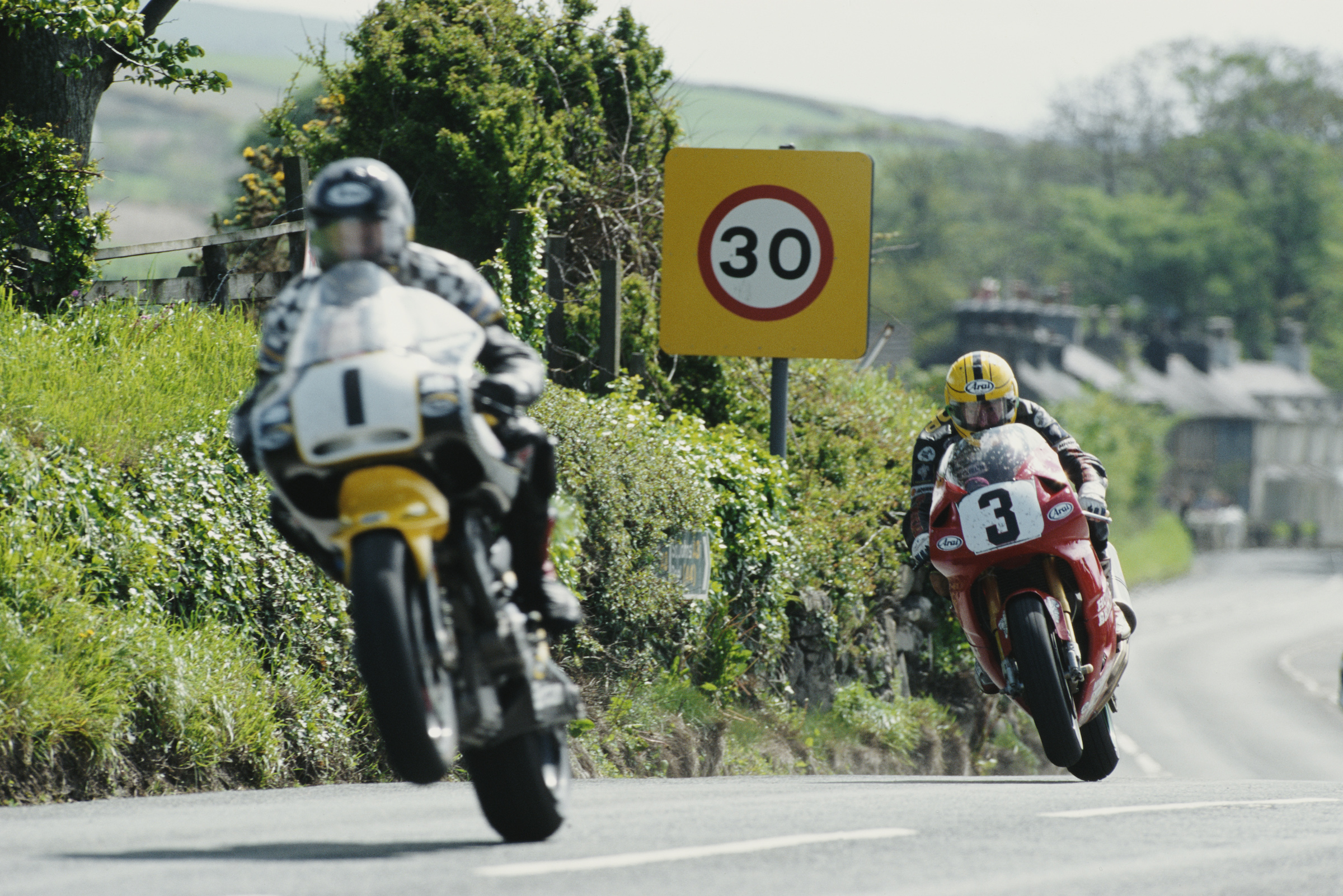
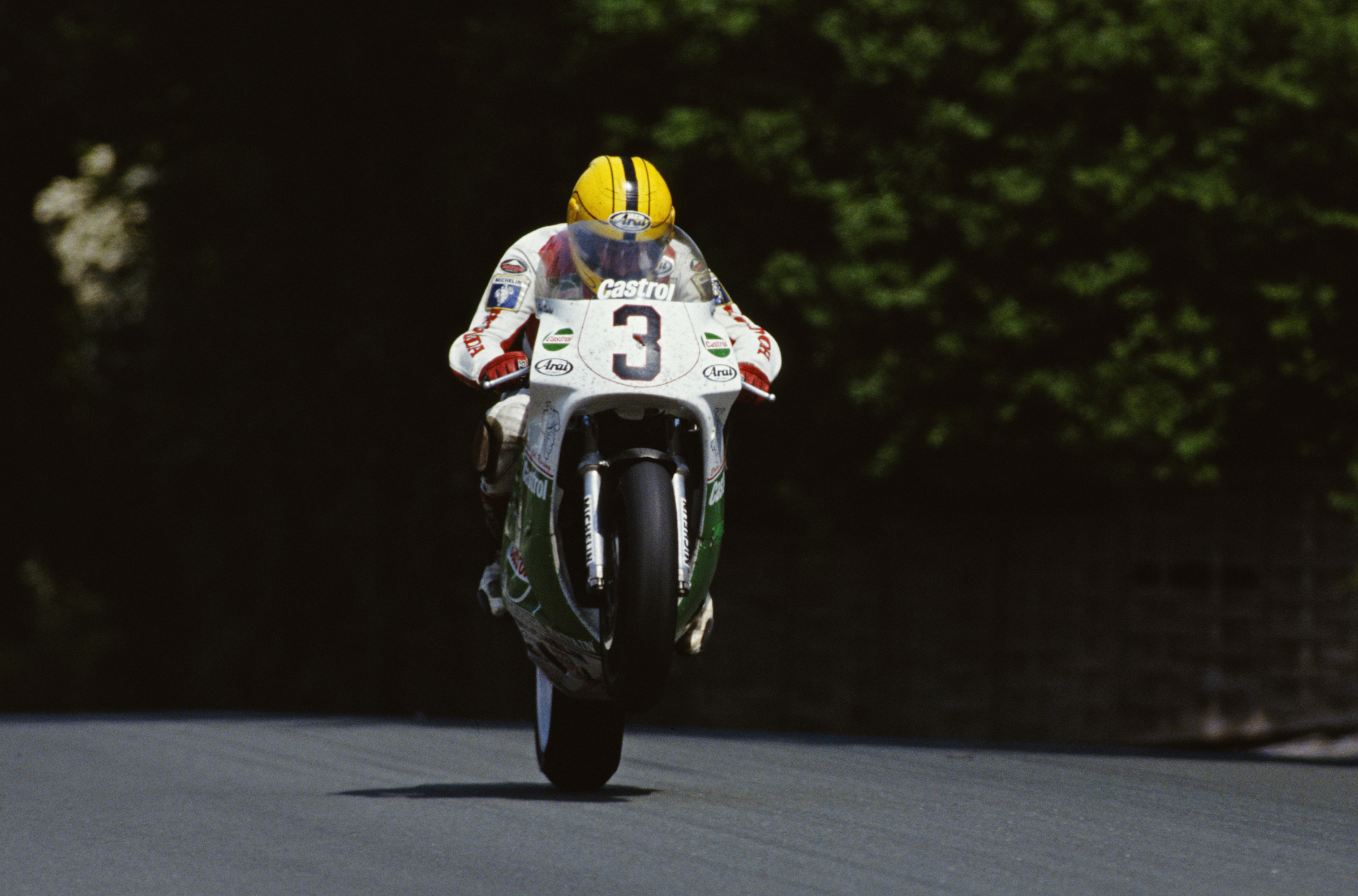
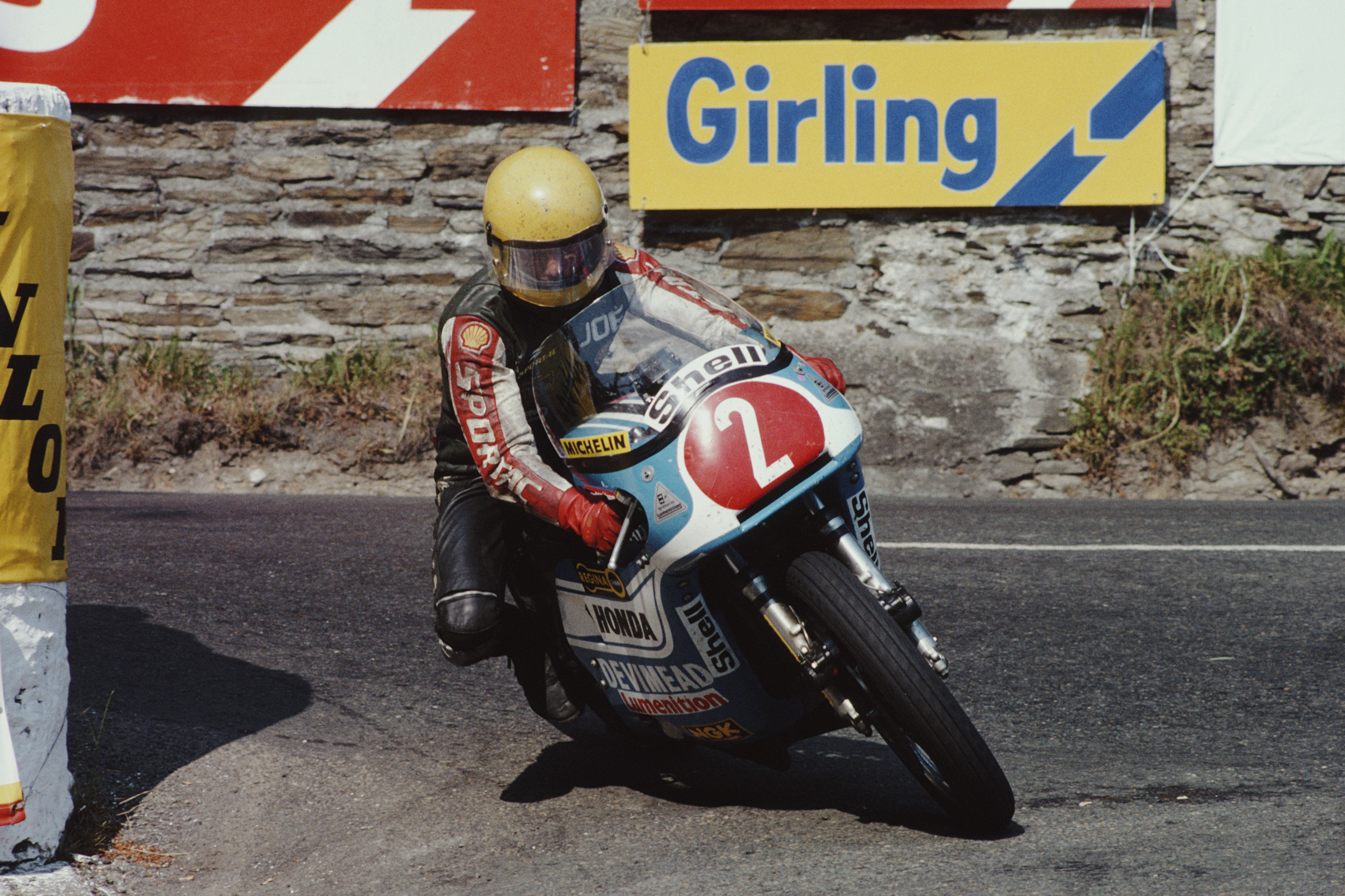
Starting May 28 and running until June 11, the Isle of Man Tourist Trophy (TT) races resumed in 2022 after a two-year hiatus. It’s a week-long spectacle you can’t imagine anywhere else in the world: Packs of motorcyclists yowling through narrow streets flat-out, unforgiving stone walls just inches away. Riders casually refer to life-ending obstacles as “the furniture.” On the high mountain sections, flocks of seabirds sometimes cross the road, shredding fairings if hit at speed.
Since Ayrton Senna’s fatal crash in 1994, only one driver has died competing in Formula One (Jules Bianchi passed away in 2015 from injuries sustained during the 2014 Japanese Grand Prix). In that same time, 90 riders have been killed while contesting Isle of Man races. Even when riders avoid death, they are wise to prepare for maimed bodies and broken bones.
(Then again, you could say the same thing about non-competitive motorcycle riding. If bikes did not already exist, would any government allow people to ride them at motorway speeds protected by no more than a crash helmet and a leather jacket – sometimes, not even those? The danger is always there: but it’s not the point of riding, it’s the byproduct.)
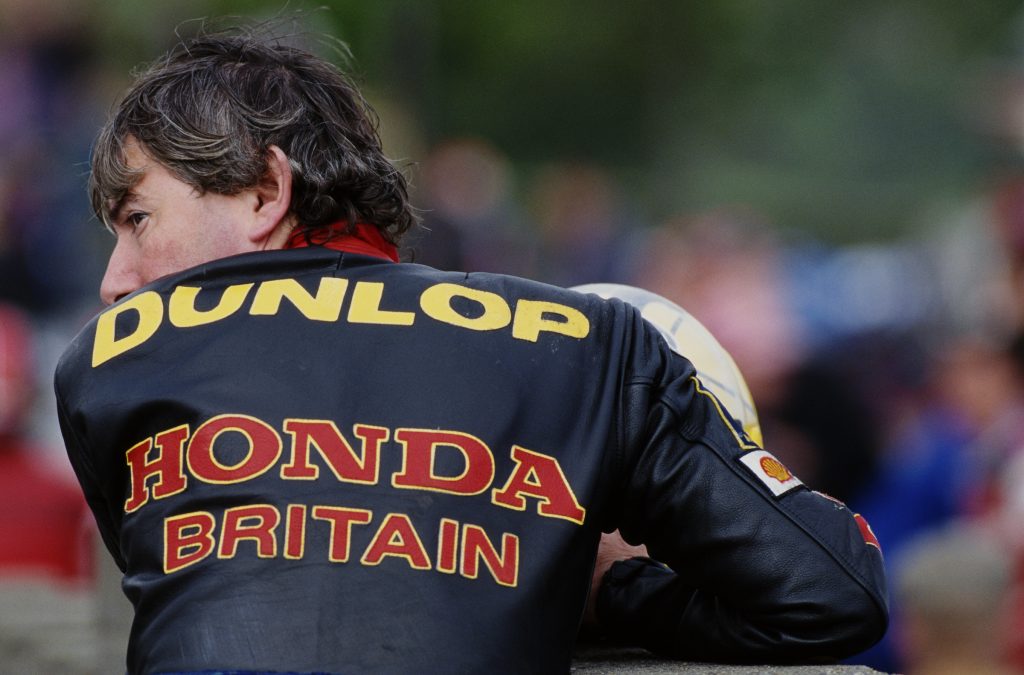
For Joey Dunlop, racing on the Isle of Man was like coming home. Following his debut in 1976, he won his first race there in 1977. By 1981 he had signed with Honda’s team, and it was game, set, and match. Over the course of his career, he would win twenty-six TT races, more than anyone else. In 2000, his last year of competition, the 48-year-old won three different Tourist Trophy races (F1, Senior, and Junior) during a single week of racing… for the third time (his other two “hat tricks” occurred in ’85 and ’88). Today, the overall champion at the Isle of Man TT (according to World Championship points) is awarded the Joey Dunlop trophy.
Dunlop’s racing resume speaks eloquently of his skill, but it says little about the man’s character. Though he would race, and win, time and again, little changed for Dunlop from those early days. He was painfully shy when interviewed, with a thick Ballymoney accent that overseas audiences struggled to understand. When back home, he’d happily stop and chat with the locals, devoid of any superstar airs. He insisted on working on his own racing bike in his home workshop, often to the frustration of Honda’s team of engineers. He continuously spent his offseasons in quiet charity work, filling up his transporter van with supplies and traveling alone to eastern European orphanages to distribute them.
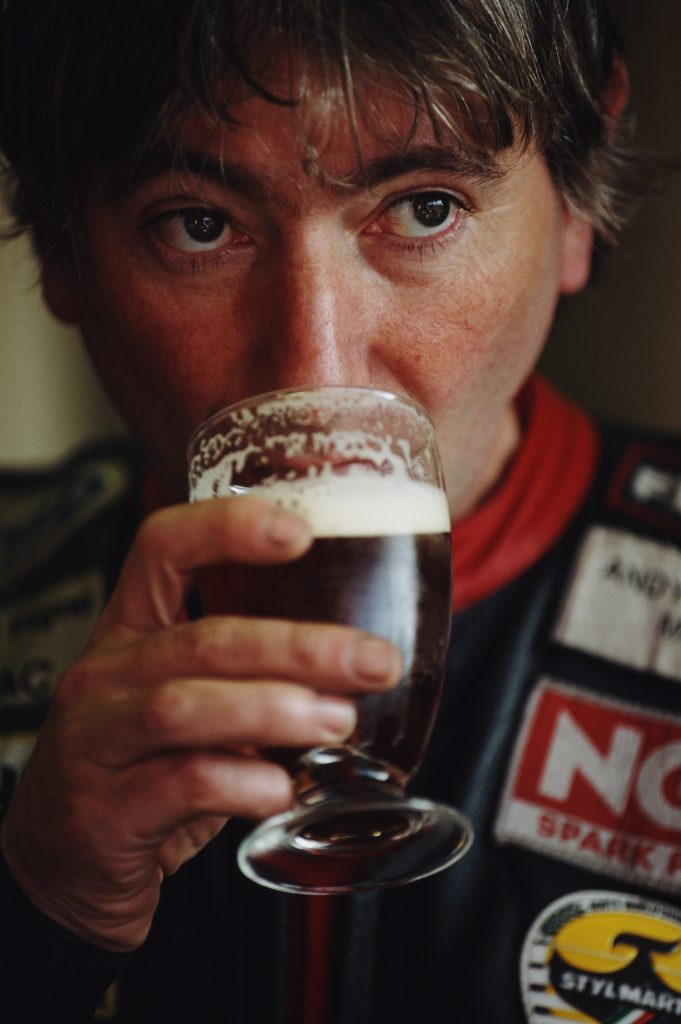
Withdrawn and self-effacing, Joey Dunlop forged his fame in an era of religious tension unfamiliar to most in the Western world. From the late ’60s through the 1990s, Northern Ireland was rent by political and nationalist divides that were exacerbated by religious sectarianism and frequently flared into violence. The IRA agreed to a ceasefire in 1994, and 1998’s Good Friday Accords disarmed remaining paramilitary groups, but, to this day, those rifts lie barely under the surface. Though the Dunlop family belonged to Northern Ireland’s Protestant majority, motorcycle racing surely represented a rare and precious kind of freedom for Joey.
The cost, however, was high. In 1980, Dunlop lost three friends to racing crashes in a single year, including Mervyn Robinson. Though Dunlop was married for nearly thirty years to his childhood sweetheart, Linda Patterson, none of his statues wears a wedding band, since a crash that cracked his pelvis lost Joey his fourth finger at the age of 46. Motorcycle road racing would claim his brother Robert, his nephew William, and, on 2 July, 2000, Joey himself.
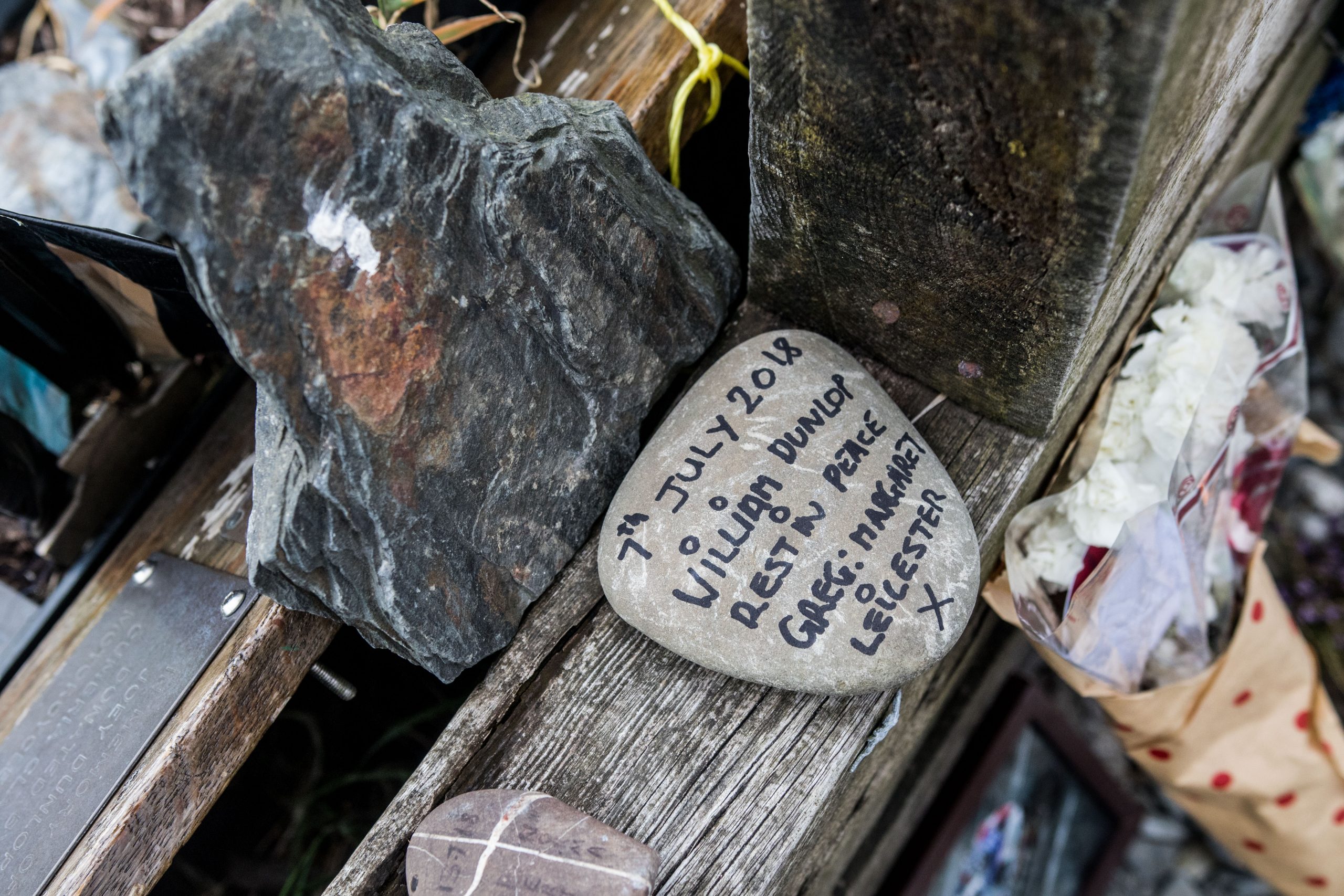
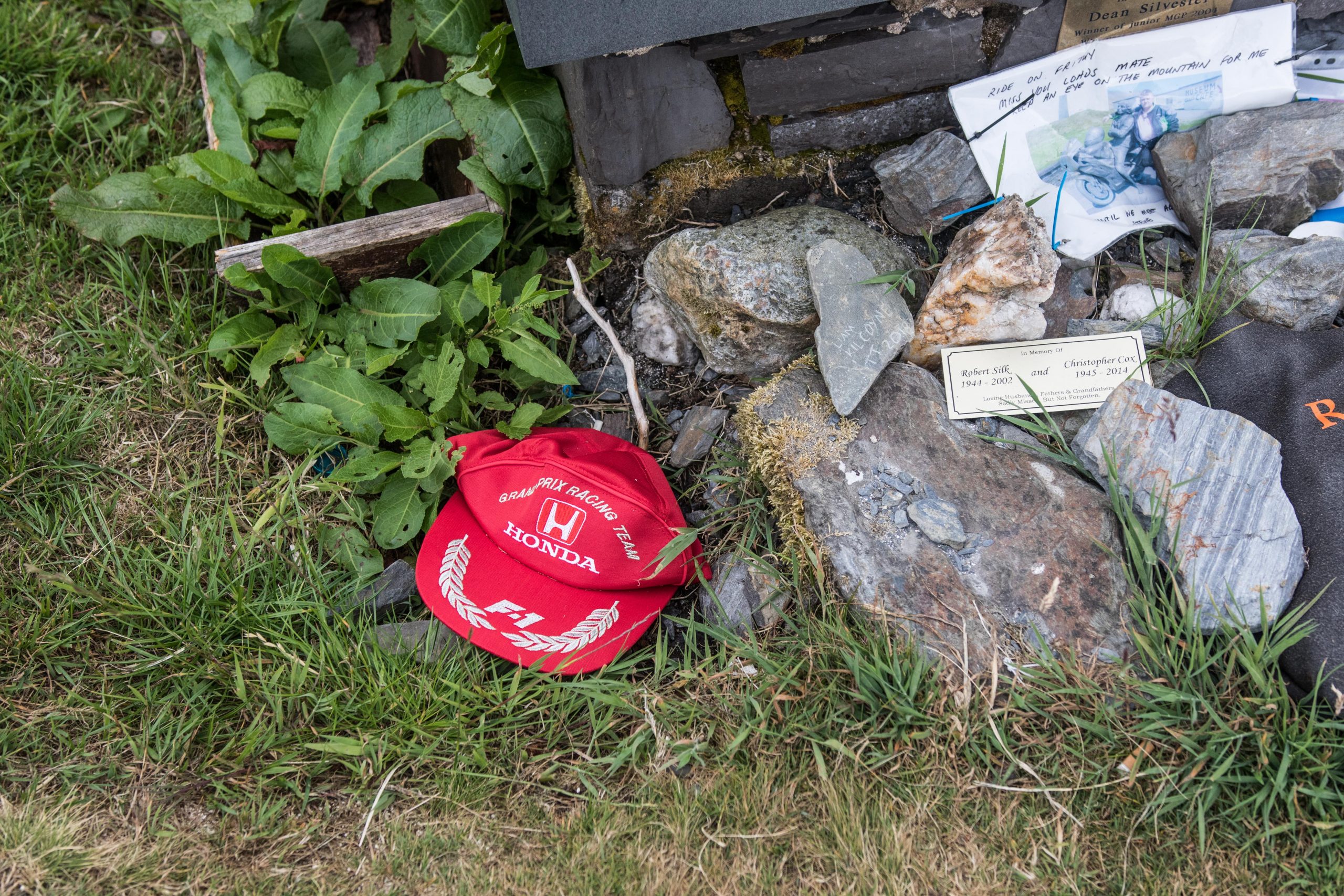
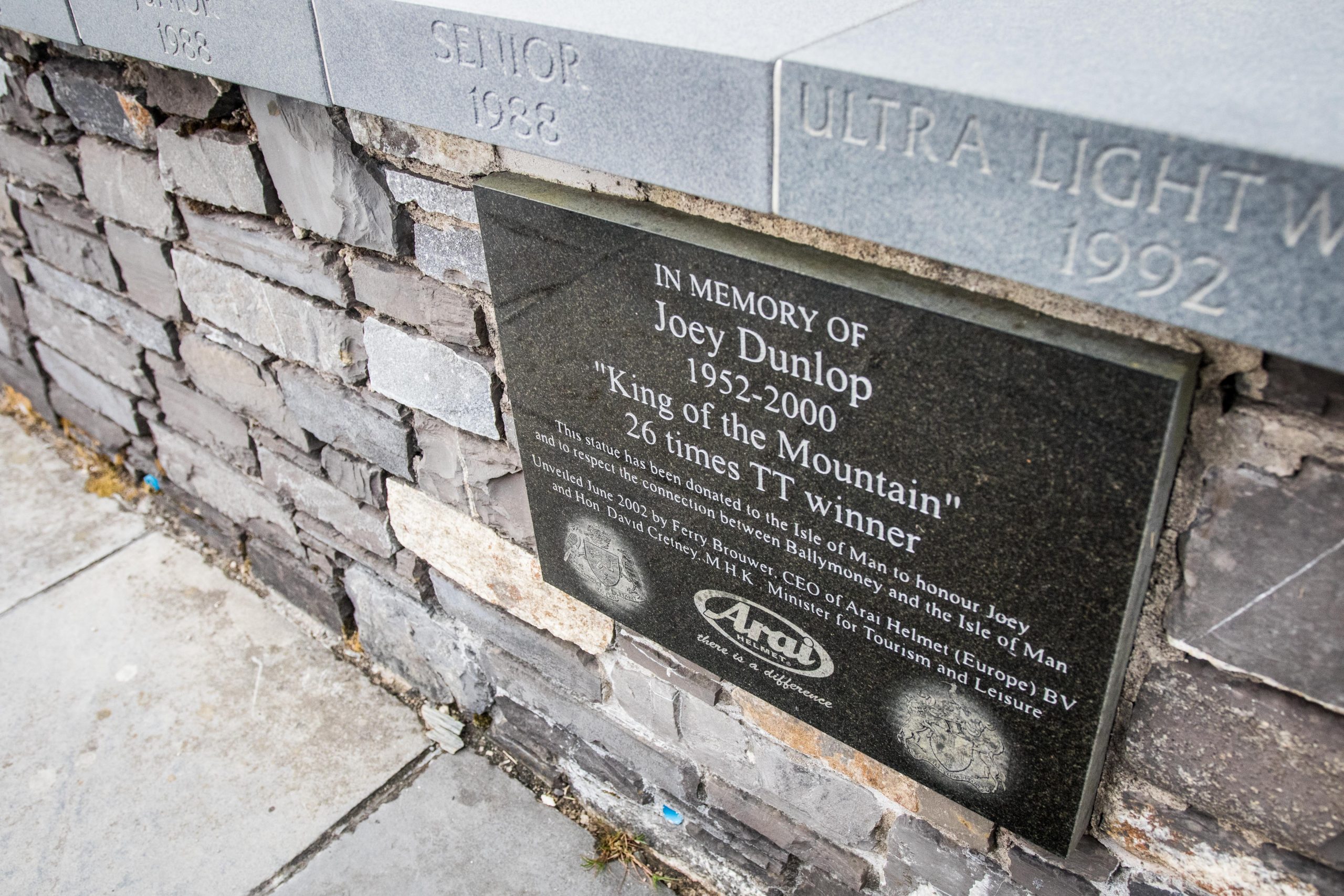
Not a month after he captured his historic triple at the Isle of Man TT, Joey Dunlop was killed while leading a race in Estonia. Conditions were wet. After appearing to lose control, he crashed into a cluster of trees and died instantly.
Dunlop’s funeral was the largest held in Northern Ireland for decades. Riders and fans came from all over the world to pay tribute, some 50,000 people or more. The moment was so powerful it quelled protests at Drumcree, a flashpoint for Catholic-Protestant conflict heating up for the 12 July march. Standing, heads bowed, the people buried their hero, the man they called the King of the Roads. A memorial was set up in the place he died, another in his home town.
The motorcycle community also commissioned a statue and placed it atop the Snaefell mountain course on the Isle of Man, with Dunlop’s bronze gaze directed to Bungalow Bend. You can drive there yourself and climb up to the memorial, looking down to trace the road until it disappears over the hills against the backdrop of the Irish sea. If you do, touch the Honda’s throttle for luck.
This article was originally published on Hagerty US.
Read more
I’ve found biker heaven: Riding the dunes at Wheels and Waves
The Triumph Silver Jubilee Bonneville’s reign was short-lived
Motorised micro scooters are big with collectors










